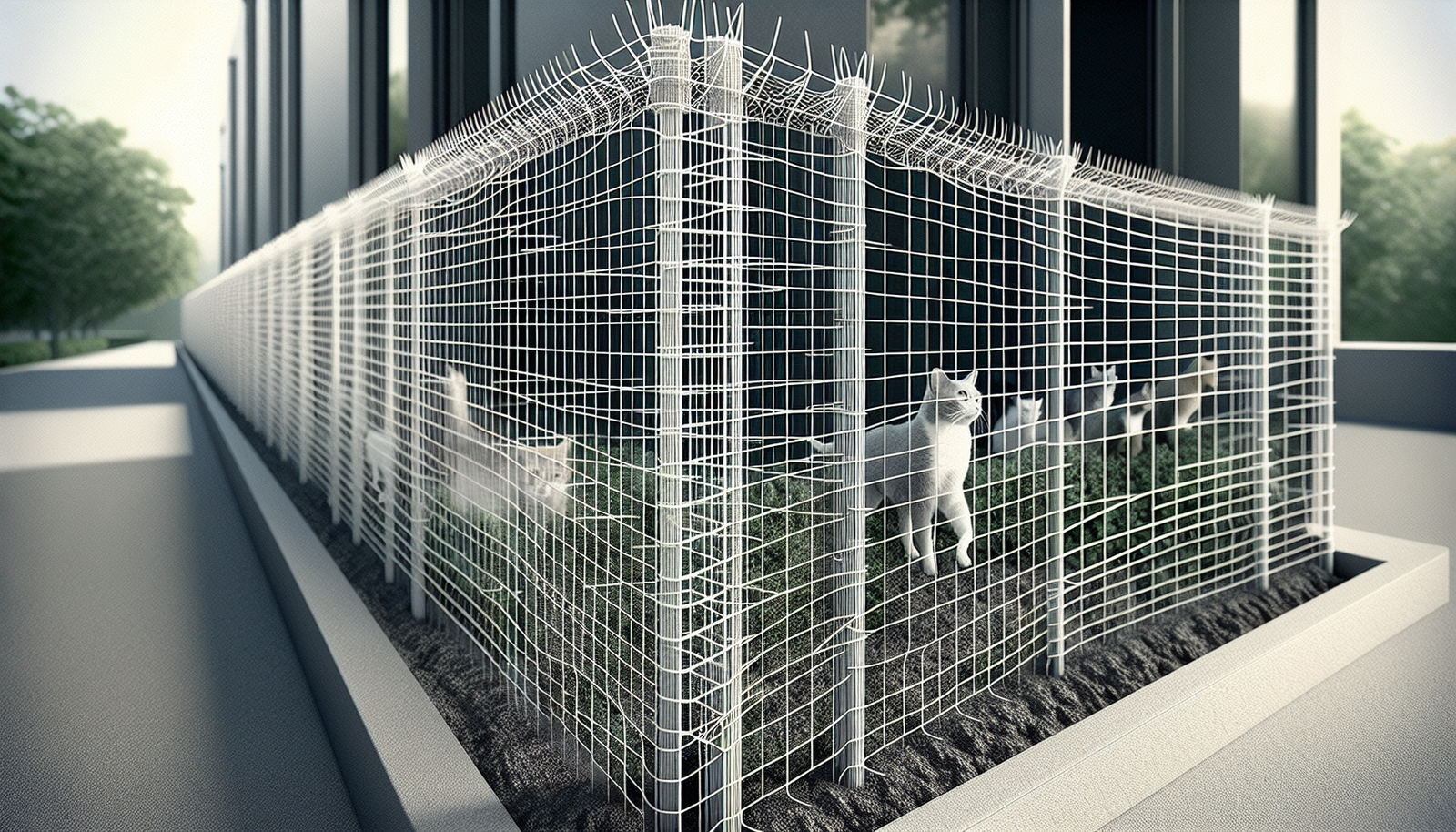Living with a cat can bring tremendous joy and companionship, but it also comes with the responsibility of ensuring their safety, especially when they have access to the great outdoors. In this complete guide, you will discover invaluable tips and tricks to create a secure and cat-friendly environment in your outdoor space. From ingenious ways to deter climbing and escaping, to selecting the right plants and creating engaging play areas, this ultimate guide will arm you with everything you need to know to give your feline friend the freedom they crave while keeping them safe and sound.
Fencing
Choose the right type of fencing
When cat-proofing your outdoor space, one of the first things to consider is the type of fencing you have. Opt for a sturdy fence that is difficult for your cat to climb or jump over. Chain-link fences are generally not recommended, as cats are skilled climbers and can easily navigate through the gaps. Instead, consider solid wood or vinyl fencing that provides a solid barrier.
Ensure the fence is tall enough
Cats are excellent jumpers, so it’s crucial to ensure that your fence is tall enough to prevent them from escaping. A height of at least 6 feet is typically recommended to deter even the most athletic cats. If your existing fence is not tall enough, you may consider adding extensions or cat-proofing measures to prevent escape attempts.
Close off any gaps or openings
Inspect your fence for any gaps or openings that cats may squeeze through. Cats are known for their agility and can often find the smallest openings to slip through. Use mesh wire or netting to cover any gaps or holes in your fence to prevent your furry friend from getting out or other animals from getting in.
Consider adding an overhang or roller bars
To further discourage your cat from attempting to climb over the fence, consider adding an overhang or roller bars. An overhang is an extension at the top of the fence that leans inward, making it difficult for cats to climb or jump over. Roller bars are cylindrical bars that spin freely, making it virtually impossible for cats to gain a foothold and climb over the fence. These additional measures can provide extra security and peace of mind.
Gates and Entrances
Install secure gates
When cat-proofing your outdoor space, it’s essential to have secure gates that can keep your cat contained while still allowing easy access for yourself and others. Choose gates that are sturdy and well-built, preferably made of metal or heavy-duty materials. Ensure that the gate closes securely and latches properly to prevent any possible escape attempts.
Use self-closing mechanisms
To prevent any accidental gate left open incidents, consider installing self-closing mechanisms on your gates. These mechanisms are designed to automatically close the gate once it has been opened, ensuring that your cat remains safely within the boundaries of your outdoor space. Adding this extra layer of protection can give you peace of mind and save you from any potential cat-escape headaches.
Consider adding a double-gate system
For added security, consider installing a double-gate system. A double-gate system consists of two gates that open in opposite directions, creating a small, enclosed area between them when both gates are closed. This design prevents your cat from easily bolting out of the gate as you enter or exit your outdoor space. It provides an extra layer of safety, particularly when visitors come and go.
Add a cat flap or door
To provide your cat with easy access to the indoors while still keeping them contained within the outdoor space, consider installing a cat flap or door. This way, your cat can move freely between the indoor and outdoor environments without the risk of escaping. Make sure to choose a cat flap or door that is appropriate for your cat’s size and weight, and that can be securely locked when needed.
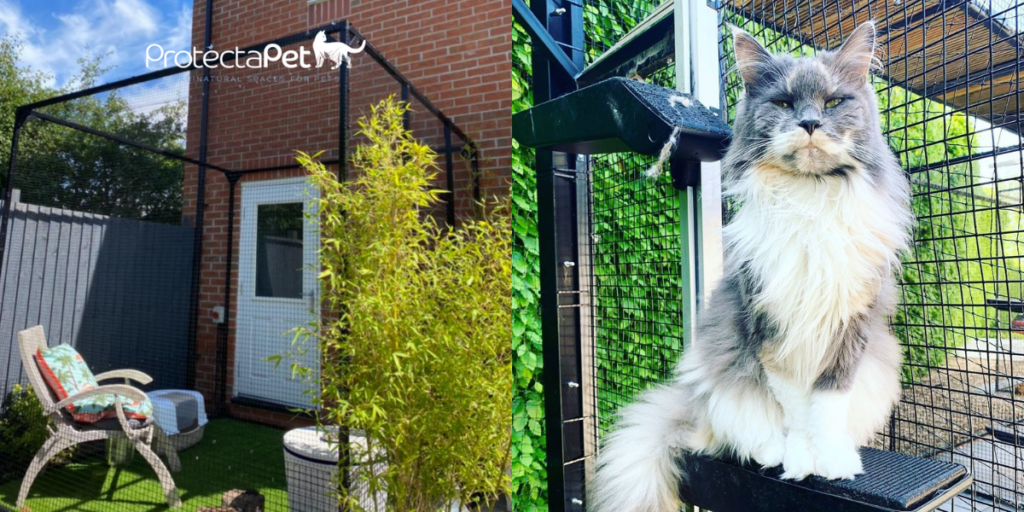
Garden Design
Avoid toxic plants
When planning your outdoor space, it’s crucial to consider the plants you choose, as some plants can be toxic to cats if ingested. Avoid planting toxic plants such as lilies, azaleas, and rhododendrons, as they can cause serious harm or even be fatal to your furry friend. Instead, opt for cat-friendly plants like catnip, catmint, or even cat grass that provide safe, natural stimulation for your cat.
Create designated play areas
To keep your cat entertained and mentally stimulated in the outdoor environment, consider creating designated play areas within your garden. These areas can include scratching posts, climbing trees or structures, and various toys that encourage exercise and play. Having dedicated spaces for play can help redirect your cat’s energy and prevent destructive behavior elsewhere in the outdoor space.
Install vertical or elevated spaces
Cats love to climb and survey their surroundings from elevated positions. Provide vertical or elevated spaces within your garden for your cat to enjoy, such as cat trees or shelves mounted on walls or fences. These elevated spaces not only satisfy your cat’s natural instincts but also give them a safe vantage point to observe their surroundings and enjoy the fresh air.
Consider using cat-friendly ground cover
To create a cat-safe environment, consider using cat-friendly ground cover in your outdoor space. Traditional mulch or gravel can pose hazards if ingested by your cat. Instead, opt for alternatives such as cedar chips or shredded rubber mulch, which are non-toxic and less likely to cause any harm if accidentally ingested. This choice can provide peace of mind and ensure the safety of your feline companion.
Outdoor Furniture and Decor
Choose cat-friendly materials
When selecting outdoor furniture and decor, it’s essential to choose materials that are cat-friendly. Avoid materials like wicker or sisal, which can easily unravel or be damaged by scratching. Instead, opt for materials such as metal or plastic that are durable and easy to clean. Additionally, consider furniture with removable and washable covers, making it easier to maintain cleanliness and freshness.
Secure loose cushions and covers
Cats love to knead and scratch on soft surfaces, so it’s important to secure any loose cushions or covers on outdoor furniture. Loose cushions can become tempting scratching posts or playthings for your cat, potentially leading to damage or even ingestion of small parts. Ensure that all cushions and covers are securely fastened or tied down, eliminating the risk of accidents or potential harm to your cat.
Avoid placing fragile items
Outdoor spaces are prone to unpredictable weather and accidental knocks, so it’s best to avoid placing fragile or delicate items in your cat-proofed outdoor environment. Fragile decorative items, glassware, or delicate plants may be easily knocked over or broken by a curious cat. Opt for sturdy and durable items that can withstand the occasional cat exploration without the fear of damage or injury.
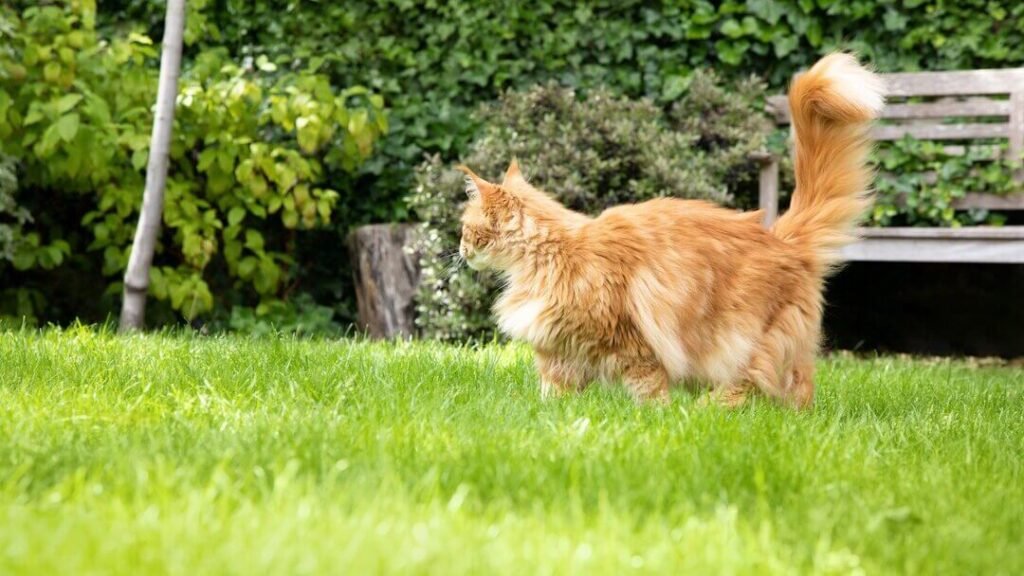
Water Features
Add protective measures to ponds
If you have a pond or any other type of water feature in your outdoor space, it’s essential to take precautions to ensure your cat’s safety. Cats are naturally curious, and the presence of water can be alluring to them. Install protective measures, such as wire mesh or netting, to cover the surface of the water, preventing your cat from accidentally falling in or getting stuck.
Secure swimming pools or hot tubs
Swimming pools and hot tubs can pose significant safety risks for cats. To prevent your cat from accidentally falling into the water, ensure that these areas are securely fenced off or covered when not in use. Invest in pool covers or take measures to prevent access to these areas, as cats may be attracted to the water but lack the ability to swim or find their way out.
Keep water sources clean and fresh
Cats are known for their preference for fresh water sources. If you have any outdoor water bowls or fountains for your cat, it’s important to keep them clean and regularly replenished with fresh water. Stagnant or dirty water can attract unwanted pests or become a breeding ground for bacteria, potentially leading to health issues for your cat. Regularly cleaning and refreshing water sources will help ensure your cat’s well-being.
Chemicals and Poisons
Store garden chemicals securely
Many garden chemicals, such as fertilizers, pesticides, and herbicides, are toxic to cats if ingested. Ensure that all garden chemicals are stored securely in sealed containers and stored in a location that is inaccessible to your cat. Consider using lockable garden sheds or cabinets to keep these chemicals safely out of reach.
Avoid using toxic pesticides
When cat-proofing your outdoor space, it’s important to avoid using toxic pesticides that could harm your cat or other wildlife. Opt for organic or pet-safe alternatives that are specifically labeled as safe for use around pets. Additionally, consider natural pest control methods, such as planting catnip or lavender, which naturally repel insects.
Check for hidden hazards
Regularly inspect your outdoor space for any hidden hazards that may pose a risk to your cat. Remove any sharp objects, exposed nails, or loose wiring that may cause harm. Also, be mindful of any potential toxic plants that may have sprouted or any fallen fruits that may be harmful if ingested. By staying vigilant and proactive, you can ensure a safe and enjoyable outdoor environment for your furry friend.
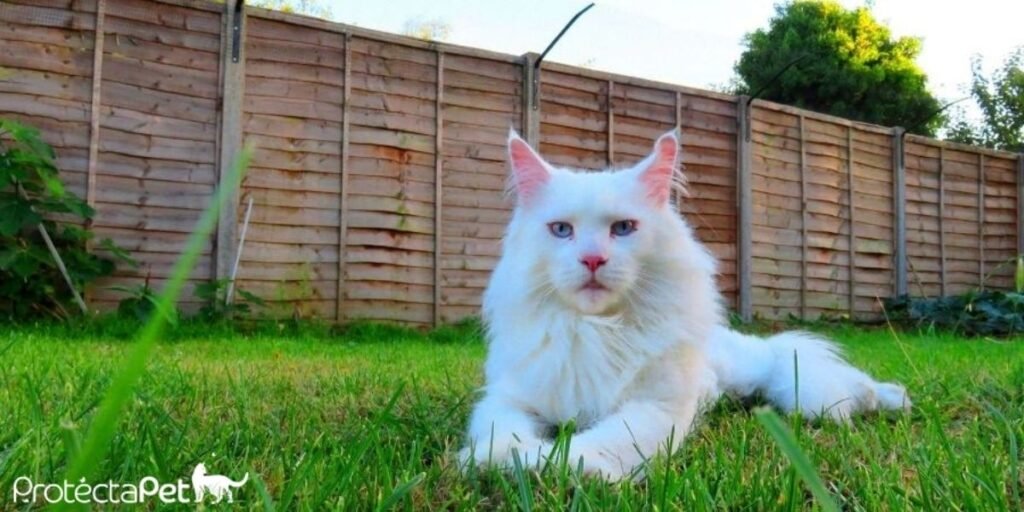
Wildlife and Prey
Deter wildlife from entering your space
To protect your cat from encounters with wildlife, take steps to deter them from entering your outdoor space. Install motion-activated lights or sprinklers to startle and discourage wildlife from venturing too close. Remove any food sources that may attract wildlife, such as garbage bins or open compost piles. By creating an environment that is less appealing to wildlife, you can reduce the chances of unwanted encounters and keep your cat safe.
Prevent the attraction of prey animals
Preventing the attraction of prey animals, such as birds or rodents, can help reduce the risk of your cat running off or getting injured in pursuit. Minimize potential nesting areas by regularly trimming bushes or trees near your outdoor space. Use bird feeders that are cat-proof and out of reach for your furry companion. By minimizing the presence of prey animals, you can redirect your cat’s hunting instincts to interactive play with toys and puzzles.
Use citronella or motion-activated devices
Citronella is a natural scent that many cats and wildlife find unpleasant, making it an effective deterrent. Consider using citronella-based products or planting citronella plants near your outdoor space to discourage animals from entering. Additionally, motion-activated devices, such as ultrasonic repellents or flashing lights, can startle and deter wildlife, helping to keep them away from your cat and property.
Outdoor Enclosures and Catio Spaces
Consider building a cat enclosure
Building a cat enclosure is an excellent way to provide a safe and controlled outdoor space for your feline friend. Cat enclosures can be attached to your house or positioned separately in your yard, offering your cat the opportunity to enjoy the outdoors while remaining protected from potential dangers. Whether it’s a large structure or a smaller balcony enclosure, providing your cat with an enclosed outdoor space ensures their safety and freedom to explore.
Create a catio space
A catio, or cat patio, is a similar concept to a cat enclosure but designed specifically for outdoor spaces such as balconies or patios. Create a secure catio area using mesh or netting to enclose the space while still allowing your cat to experience the sights, sounds, and fresh air. A catio provides a compromise between the desire for outdoor freedom and the need for safety, allowing your cat to bask in the sun and enjoy the outdoors without the risk of escape.
Use existing structures for cat-friendly spaces
If building a cat enclosure or catio is not feasible, consider utilizing existing structures in your outdoor space to create cat-friendly areas. For example, you can install shelves, cat trees, or outdoor perches on existing structures, such as walls or fences, to provide elevated spaces for your cat to explore. By utilizing what you already have, you can create safe and stimulating areas for your cat to enjoy the outdoors.
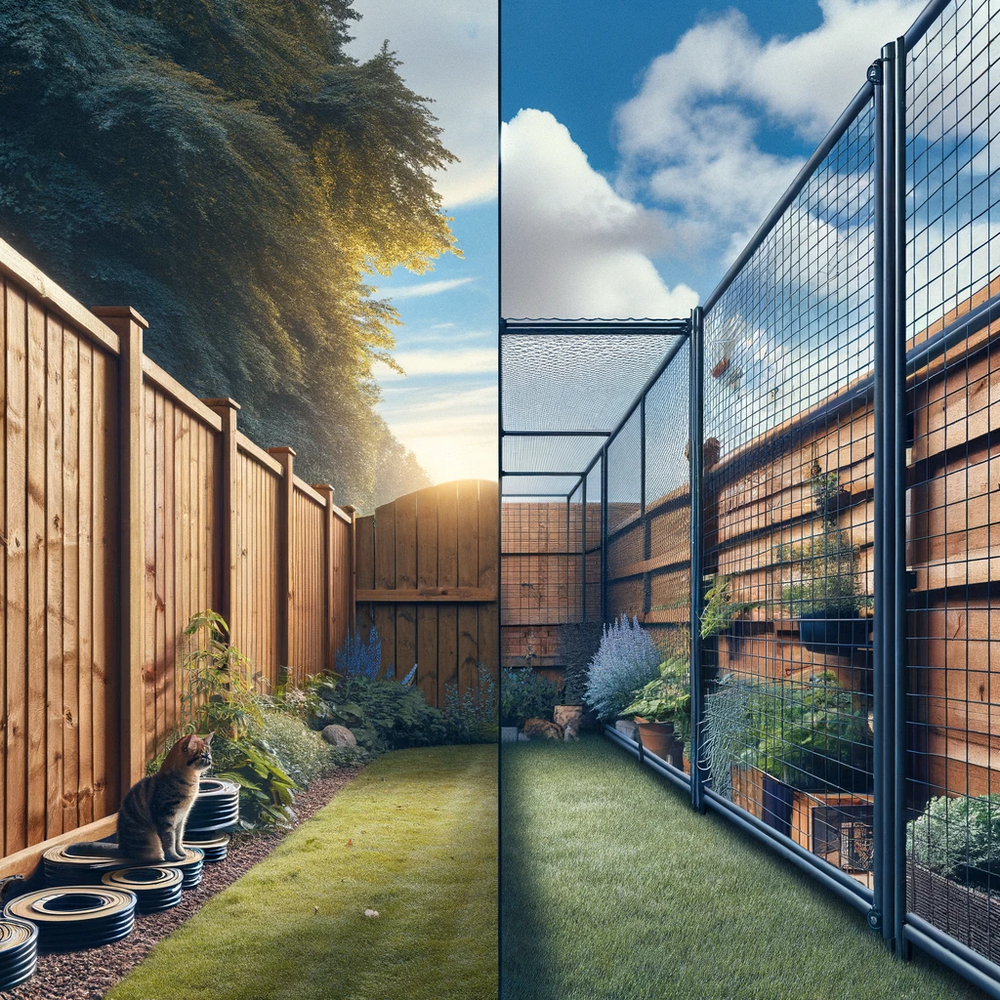
Supervision and Monitoring
Monitor your cat’s outdoor activities
When allowing your cat outdoors, it’s essential to monitor their activities to ensure their safety. Keep an eye on your cat while they explore to intervene in any potentially dangerous situations. Stay aware of their behavior and surroundings, especially if there are other animals or potential hazards nearby. By actively supervising your cat’s outdoor adventures, you can respond promptly to any concerns and minimize any risks.
Establish a routine for outdoor time
Establishing a routine for your cat’s outdoor time can help ensure their safety and provide a sense of predictability. Set specific times for outdoor exploration, allowing your cat to become accustomed to the routine. By doing so, you can minimize the chances of your cat straying too far or becoming overwhelmed in unfamiliar territory. A structured routine helps maintain control and ensures that outdoor time is enjoyable and worry-free for both you and your cat.
Use GPS or microchip tracking devices
To provide an extra layer of security and peace of mind, consider using GPS or microchip tracking devices for your cat. GPS tracking devices can be attached to your cat’s collar, allowing you to locate them accurately if they wander too far. Microchip tracking devices are implanted beneath your cat’s skin and can be scanned by veterinarians or pet shelters if your cat becomes lost. These tracking devices offer reassurance in case your cat accidentally escapes or gets lost during outdoor adventures.
Consider installing security cameras
If you want to keep a close eye on your cat’s outdoor activities, consider installing security cameras in your outdoor space. These cameras can help you monitor your cat’s movements, behavior, and interaction with the environment. Additionally, security cameras can serve as a valuable tool for identifying any potential dangers or intruders that may pose a threat to your cat. With live or recorded footage, you can stay connected and informed about your cat’s outdoor experiences.
Behavior Training and Enrichment
Provide interactive toys and puzzle feeders
To keep your cat engaged and mentally stimulated in the outdoor environment, provide them with interactive toys and puzzle feeders. These toys and feeders challenge your cat’s natural hunting instincts and provide mental stimulation while they explore and play. By offering these enrichment opportunities, you can redirect your cat’s focus away from potential escape attempts and encourage them to stay within the safety of your outdoor space.
Train your cat to respond to commands
Training your cat to respond to commands can be incredibly beneficial in ensuring their safety outdoors. Teach your cat simple commands such as “come,” “stay,” or “stop” to quickly gain their attention and redirect their behavior if needed. This training provides you with better control over your cat’s actions and allows for immediate response in potentially dangerous situations. Positive reinforcement and rewards are effective tools in training your cat and promoting good behavior outdoors.
Use positive reinforcement to discourage roaming
Positive reinforcement is a powerful tool when it comes to discouraging roaming behaviors in your cat. Reward your cat with praise, treats, or playtime whenever they choose to stay within the boundaries of your outdoor space. By associating positive experiences with staying close by, your cat is more likely to prioritize the safety and comfort of the designated area. Consistency and patience are key when using positive reinforcement to shape your cat’s behavior.
By following these comprehensive guidelines, you can successfully cat-proof your outdoor space, ensuring a safe and enjoyable environment for your furry friend. Remember, the ultimate goal is to provide your cat with the opportunity to experience the outdoors while minimizing any potential risks or dangers. With proper planning, precautions, and a little creativity, you can create a space that both you and your cat will love. Enjoy watching your feline companion explore, play, and bask in the wonders of the great outdoors!


